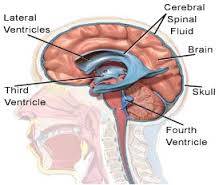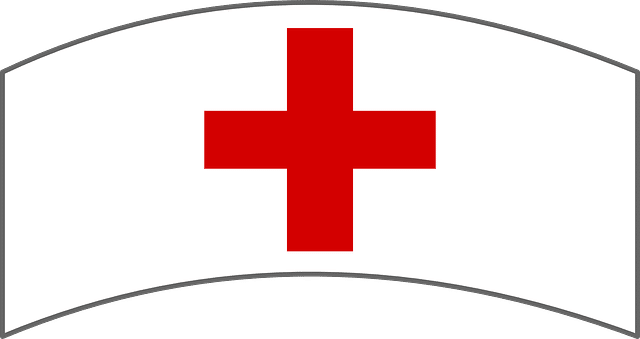NCLEX Cerebrospinal Fluid
NCLEX Cerebrospinal Fluid
As a part of our continued review of the human body, we decided to take an in-depth look at Cerebrospinal fluid. Within this article, we will cover in great detail the structure and make-up of cerebrospinal fluid.
Cerebrospinal Fluid (CSF) Overview
Cerebrospinal fluid (CSF) is a clear, colorless body fluid found in the brain and spine. It is produced in the choroid plexuses of the ventricles of the brain. It acts as a cushion or buffer for the brain’s cortex, providing basic mechanical and immunological protection to the brain inside the skull. The CSF also serves a vital function in cerebral autoregulation of cerebral blood flow.
The CSF occupies the subarachnoid space (between the arachnoid mater and the pia mater) and the ventricular system around and inside the brain and spinal cord. It constitutes the content of the ventricles, cisterns, and sulci of the brain, as well as the central canal of the spinal cord.
Production of CSF
- The brain produces roughly 500 mL of cerebrospinal fluid per day. This fluid is constantly reabsorbed, so that only 100-160 mL is present at any one time.
- Ependymal cells of the choroid plexus produce more than two thirds of CSF. The choroid plexus is a venous plexus contained within the four ventricles of the brain, hollow structures inside the brain filled with CSF. The remainder of the CSF is produced by the surfaces of the ventricles and by the lining surrounding the subarachnoid space.
- Ependymal cells actively secrete sodium into the lateral ventricles. This creates osmotic pressure and draws water into the CSF space. Chloride, with a negative charge, moves with the positively charged sodium and a neutral charge is maintained. As a result, CSF contains a higher concentration of sodium and chloride than blood plasma, but less potassium, calcium and glucose and protein
Circulation of CSF
CSF circulates within the ventricular system of the brain. The ventricles are a series of cavities filled with CSF, inside the brain. The majority of CSF is produced from within the two lateral ventricles. From here, the CSF passes through the interventricular foramina to the third ventricle, then the cerebral aqueduct to the fourth ventricle. The fourth ventricle is an outpouching on the posterior part of the brainstem. From the fourth ventricle, the fluid passes through three openings to enter the subarachnoid space – these are the median aperture, and the lateral apertures. The subarachnoid space covers the brain and spinal cord. There is connection from the subarachnoid space to the bony labyrinth of the inner ear making the cerebrospinal fluid continuous with the perilymph.
Reabsorption of CSF
It had been thought that CSF returns to the vascular system by entering the dural venous sinuses via the arachnoid granulations (or villi). However, some have suggested that CSF flow along the cranial nerves and spinal nerve roots allow it into the lymphatic channels; this flow may play a substantial role in CSF reabsorbtion, in particular in the neonate, in which arachnoid granulations are sparsely distributed. The flow of CSF to the nasal submucosal lymphatic channels through the cribriform plate seems to be especially important.
CSF Contents
- The CSF is created from blood plasma and is largely similar to it, except that CSF is nearly protein-free compared with plasma and has some modified electrolyte levels. CSF contains approximately 0.3% plasma proteins, or approximately 15 to 40 mg/dL, depending on sampling site, and it is produced at a rate of 500 ml/day. Since the subarachnoid space around the brain and spinal cord can contain only 135 to 150 ml, large amounts are drained primarily into the blood through arachnoid granulations in the superior sagittal sinus. Thus the CSF turns over about 3.7 times a day. This continuous flow into the venous system dilutes the concentration of larger, lipid-insoluble molecules penetrating the brain and CSF.
- Healthy cerebrospinal fluid is free of red blood cells, and at most contains only a few white blood cells. Any cell count higher than that constitutes pleocytosis, an excess of cells.
Development of CSF
- Around the third week of development, the embryo is a three-layered disc, covered on the dorsal surface by a layer of endoderm. In the middle of this surface is a linear structure called the notochord. As the endoderm proliferates, the notochord is dragged into the middle of the developing embryo and becomes the neural canal.
- As the brain develops, by the fourth week of embryological development three swellings have formed within the embryo around the canal, near where the head will develop. These swellings represent different components of the central nervous system: the prosencephalon, mesencephalon and rhombencephalon.
- The developing forebrain surrounds the neural cord. As the forebrain develops, the neural cord within it becomes a ventricle, ultimately forming the lateral ventricles. Along the inner surface of both ventricles, the ventricular wall remains thin, and a choroid plexus develops, releasing CSF. The CSF quickly fills the neural canal.
Function of CSF
- Buoyancy: The actual mass of the human brain is about 1400 grams; however, the net weight of the brain suspended in the CSF is equivalent to a mass of 25 grams. The brain therefore exists in neutral buoyancy, which allows the brain to maintain its density without being impaired by its own weight, which would cut off blood supply and kill neurons in the lower sections without CSF.
- Protection: CSF protects the brain tissue from injury when jolted or hit. In certain situations such as motor vehicle crashes or sports injuries, the CSF cannot protect the brain from forced contact with the skull case, causing hemorrhaging, brain damage, and sometimes death.
- Chemical stability: CSF flows throughout the inner ventricular system in the brain and is absorbed back into the bloodstream, rinsing the metabolic waste from the central nervous system through the blood–brain barrier. This allows for homeostatic regulation of the distribution of neuroendocrine factors, to which slight changes can cause problems or damage to the nervous system. For example, high glycine concentration disrupts temperature and blood pressure control, and high CSF pH causes dizziness and syncope. To use Davson’s term, the CSF has a “sink action” by which the various substances formed in the nervous tissue during its metabolic activity diffuse rapidly into the CSF and are thus removed into the bloodstream as CSF is absorbed.[
- Prevention of brain ischemia: The prevention of brain ischemia is made by decreasing the amount of CSF in the limited space inside the skull. This decreases total intracranial pressure and facilitates blood perfusion.
- Clearing waste: CSF has been shown to be critical in the brain’s glymphatic system, which plays an important role in flushing metabolic toxins or waste from the brain’s tissues’ cellular interstitial fluid (ISF). CSF flushing of wastes from brain tissue is further increased during sleep, which results from the opening of extracellular channels controlled through the contraction of glial cells, which allows for the rapid influx of CSF into the brain. These findings indicate that CSF may play a large role during sleep in clearing metabolic waste, like beta amyloid, that are produced by the activity in the awake brain.
NCLEX National Exam Courses
Overview
- Elite Reviews Offers A Variety Of Online Courses That Will More Than Adequately Help Prepare The Graduate Nurse To Pass The National Exam.
- Each Course Includes Sample Questions & The Most Current NCLEX Exam Updates.
NCLEX Free Trial
- FREE Sample Lecture & Practice Questions
- Available For 24 Hrs After Registration
- Click The Free Trial Link To Get Started – NCLEX Free Trial
How It Works
How The Course Works
- First – Purchase The Course By Clicking On The Blue Add To Cart Button – You Will Then Be Prompted To Create A User Account.
- Second – After Creating An Account, All 3 Options (90, 120, 150 Days) Will Be Listed. Select The Option You Desire And Delete The Other Two.
- Third – You Will Be Prompted To Pay For This Review Using PayPal – After Payment You Will Be Redirected Back To Your Account.
- Last – Click The Start Button Located Within Your Account To Begin The Course
- 175 Prep Questions
- Q & A With Rationales
- Alt. Format Questions
- 90 Days Availability
- Cost $75.00
- 1250+ Prep Questions
- Q & A With Rationales
- Alt. Format Questions
- 90 Days Availability
- Cost $200.00
NCLEX Practice Questions Bundle
- 1350+ Prep Questions
- Q & A With Rationales
- Alt. Format Questions
- 90 Days Availability
- Cost $225.00
NCLEX Review Course
- Option 1
- Lectures & 1250+ Questions
- Q & A With Rationales
- Alt. Format Questions
- 90 Days Availability
- Cost $275.00
- Option 2
- Lectures & 2000+ Questions
- Q & A With Rationales
- Alt. Format Questions
- 90 Days Availability
- Cost $325.00
NCLEX Review Course Bundle
- Option 3
- Lectures & 3000+ Questions
- Q & A With Rationales
- Alt. Format Questions
- 90 Days Availability
- Cost $375.00







